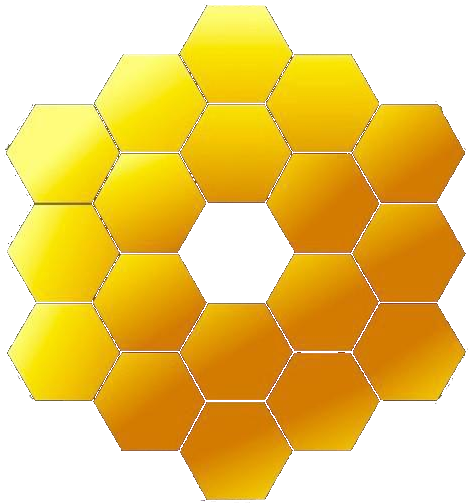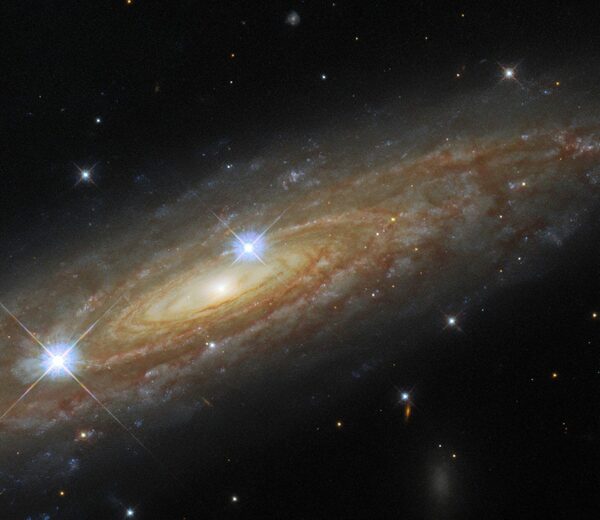
Welcome to the eleventh of our monthly newsletters. We will be bringing this bulletin to you around the middle of each month to keep you informed about Planetarium and Friends news, as well as happenings in the world of astronomy and events in our area related to science education. Visit the website for more news updates and a list of our articles.
through the Combined Federal Campaign: CFC# 39066

Lunar Eclipse
In the small hours of November 19th everyone in North, Central, and most of South America,
as well as the inhabitants of parts of other continents, was treated to a lovely almost-total lunar eclipse.
Your intrepid newsletter editor was on the scene. We are eager
to see your pictures of the eclipse, and would love to include them on the website. Speaking of the website, we
hope you like the redesign.

Seeing Farther Into the Universe
On November 14th the Friends hosted a joint program with NASA about the James Webb Space Telescope.
It featured a talk by Friends Board President
Jennifer Lynn Bartlett, video segments, some in Spanish,
provided by NASA,
and a presentation by L. Y. Aaron Yung about his
research at NASA in modeling galaxy formation. The event was held at the Arlington Mill Community Center,
and most of it was streamed live via our Facebook page and YouTube Channel.
For those of you who did not get to attend the Webb Space Telescope event, you can still register to be a “virtual guest” for the launch. Sign up here to receive information from NASA about the launch, mission activities, and post-launch mission milestones.
With contributions from
Kathi Overton.

Sedna Discovered 2003 November 14
Eighteen years ago, Mike Brown and his team detected a minor planet, now known as Sedna, in data they collected at Palomar Observatory. (Sedna is the Innuit sea goddess.) At the time, it was the most distant Solar System object known, unexpectedly orbiting beyond the Kuiper Belt near the inner boundary of the Oort Cloud. Discoveries like these are changing our understanding of our Solar System.
Contributed by
Jennifer Lynn Bartlett.
David M. Brown Scholarship
On Giving Tuesday (November 30), the Friends will be encouraging members and community members to donate to the David M. Brown Scholarship. This annual award assists an Arlington Public School senior pursue an undergraduate degree in science. It honors David M. Brown an APS graduate, Navy flight surgeon, and astronaut who died in the 2003 Space Shuttle Columbia disaster. Please assist a promising young scientist obtain the education they need to succeed.
Contributed by
Jennifer Lynn Bartlett.
Telescopes, Part 1
Telescopes are the tools astronomers use to look at the universe. But not all telescopes are the alike. In upcoming months, we’ll look at some of the different types of scopes, and how they are used. We’ll also provide web links where you can find more information.
A simple refracting telescope uses 2 lenses—an “objective” and an “ocular” (eyepiece)—to collect light, and to focus and magnify the result jing image.

The “refractor” was the first type of optical telescope invented, and appeared early in the 17th century. Galileo Gallilei is generally recognized as the first person to use a telescope to seriously observe the sky and record his observations. While he did not invent the telescope, he did design and build his own refractors, and used them to make important observations about the Moon, Jupiter, Saturn, Venus, and the Sun. During the past 400 years, many improvements have been made to refractor design. There are now binoculars that provide views with equal magnification and better clarity than the tools Galileo used. Modern refracting scopes are also a popular choice for many astrophotographers. Contributed by Kathi Overton.

Welcome Back, Orion
The constellation Orion, the hunter, is rising around 8 PM EST now and will grace our skies throughout winter. Look toward the east along the horizon for this spectacular and well-known pattern of bright stars even in light-polluted Arlington. Betelgeuse and Rigel are two of its best-known stars, which are red and blue, respectively. Distinctly orange Aldebaran (in Taurus the Bull) shines above.
Contributed by
Jennifer Lynn Bartlett.
Chiles in Spaaaaaace
Having consumed all of the first harvest of chiles from NASA’s Plant Habitat-04 (PH-04) experiment, ISS astronauts
have been sternly reminded to save some of the second harvest, scheduled for November 26, for analysis back on Earth.
The experiment is part of a research program aimed at solving the problems of feeding astronauts on long missions;
the psychological effects of cultivation of and proximity to plants is also of interest.
After an extensive and delicious evaluation program, NASA investigators decided on the Hatch pepper, named after
the region in New Mexico. It’s a lightweight, with a Scoville rating of 2,000–4,000; however, they did eat them raw,
as the ISS only has a warming oven. Astronaut Megan McArthur devised a space taco combining fajita beef,
rehydrated tomatoes and artichokes with the peppers.
Russia Creates Dangerous Orbiting Debris Cloud
On November 15th Russia tested an anti-satellite weapon by recklessly using it to destroy one of her own satellites. This created a massive cloud of debris in low-Earth orbit from which the crew of the International Space Station (which at the moment includes two Russian cosmonauts) have to take periodic measures to protect themselves and the Station. Early on the morning of the 16th all residents of the ISS were obliged to shelter in the transport vehicle as they passed close to the debris cloud. NASA administrator Bill Nelson is “outraged by this irresponsible and destabilizing action”.

Spiral Galaxy UGC 11537
230 million light-years away
Captured by the Hubble Space Telescope
Released November 15, 2021
Edited by Lee Phillips